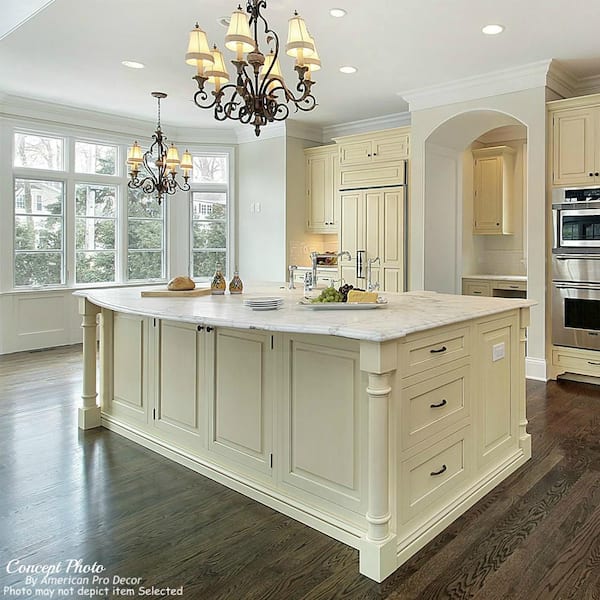Produce a Stunning Centerpiece with Classy Legs For Kitchen Island
Produce a Stunning Centerpiece with Classy Legs For Kitchen Island
Blog Article
An Overview to Selecting the Perfect Legs For Kitchen Area Island for Your Home
Choosing the suitable legs for your kitchen area island is a nuanced choice that affects both the functionality and visual appeal of this central space. As you take into consideration these components, it comes to be obvious that the ideal legs can transform not just the appearance of your kitchen area yet additionally its use for years to come.

Comprehending Kitchen Island Legs
When choosing legs for a cooking area island, it's vital to understand their practical and aesthetic roles in the general layout. The legs act as a vital support group, guaranteeing security and sturdiness for the island, which usually functions as a workspace, eating area, or collecting spot. As a result, the choice of material and building and construction strategy must be robust enough to hold up against day-to-day use and possible wear.
Along with their architectural responsibilities, legs contribute dramatically to the island's visual charm. They can improve the kitchen area's design, whether with typical, modern, or diverse styles. The height and percentage of the legs are likewise essential factors to consider; they have to integrate with the island's kitchen counter height while guaranteeing comfortable seating for those utilizing the area.
Moreover, the leg style can affect the general circulation of the kitchen area. Open, ventilated leg styles can create a sense of agility, while strong, considerable legs might convey a much more based and secure aesthetic - Legs For Kitchen Island. Recognizing these visual and functional elements will direct home owners in making notified options that complement their cooking area's design and boost its usability
Popular Styles and Products
The choice of legs for a cooking area island encompasses a range of prominent designs and materials, each offering distinct features that can enhance both performance and looks. Conventional legs usually show luxuriant information and craftsmanship, enhancing traditional cooking area styles.

Elevation and Stability Considerations

The legs of the kitchen island ought to provide sufficient assistance, making sure that the structure can hold up against day-to-day usage without shifting or this content tottering. Material selection plays a substantial role in security; steel legs, for circumstances, have a tendency to provide better stamina compared to timber.
Matching Your Kitchen Area Aesthetic
Picking the right legs for your kitchen island goes past functionality; it likewise plays a substantial function in the total visual of the area (Legs For Kitchen Island). When choosing legs, consider the layout style of your cooking area.
Color is one more essential factor. Legs that complement or comparison with your island's surface area and surrounding cabinetry can produce aesthetic Click This Link consistency or striking focal points. For instance, matching dark wood legs with a light marble countertop can add deepness and rate of interest. Furthermore, take into consideration the finish of the legs; matte, glossy, or textured surfaces can dramatically impact the general feel of the cooking area.
Installment and Upkeep Tips
Mounting cooking area island legs requires careful interest to information to make sure both stability and visual appeal. Make use of a stud finder to situate wall studs if you are connecting the legs to a wall surface or utilizing braces for included support.
When protecting the legs, make use of premium screws and, if needed, wood glue for extra stamina. For metal legs, ensure that you are utilizing proper anchors and devices to stop damage to your flooring. It is a good idea to check for levelness after installment, making adjustments as required to stay clear of tottering.
Tidy the legs with a suitable cleaner, staying clear of unpleasant products that might scrape the surface. By following these installment and maintenance ideas, you can make sure that your kitchen island legs remain both functional and aesthetically enticing.
Conclusion
In final thought, selecting the suitable legs for a cooking area island requires mindful consideration of height, stability, and aesthetic compatibility. Ultimately, thoughtful leg choice plays a vital duty in boosting both the practicality and design of the cooking area room.
When picking legs for a kitchen area island, it's important to comprehend their visual and practical functions in the overall style. Open, airy leg designs can create a sense of lightness, while strong, substantial legs may communicate a more grounded and secure aesthetic. The legs of the kitchen area island ought to offer appropriate assistance, guaranteeing that the structure can stand up to everyday usage without wobbling or changing.Mounting cooking area island legs requires mindful interest to information to make sure both stability and visual allure.In conclusion, picking the proper legs for a kitchen island requires mindful factor to consider of height, security, and aesthetic compatibility.
Report this page